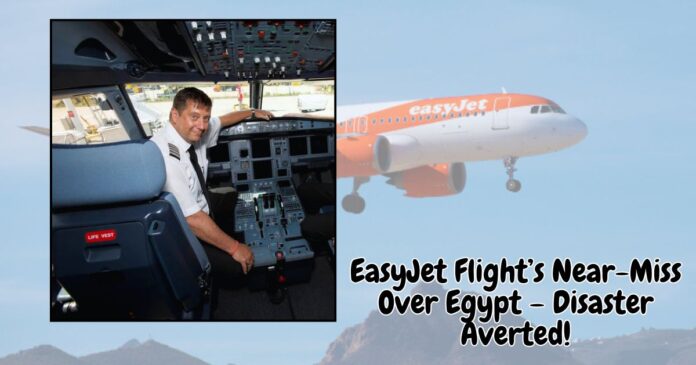EasyJet Pilot Suspended After Near-Miss with Mountain Over Egypt
EasyJet Pilot’s Critical Error Raises Alarming Safety Concerns
An EasyJet pilot has been suspended following a terrifying near-miss incident where his plane came dangerously close to a mountain range over Hurghada, Egypt. The incident, which took place in February, has raised serious safety concerns, leading to an official investigation by the airline.
How the EasyJet Pilot’s Actions Nearly Led to Disaster
The Airbus A320, which departed from Manchester Airport, was on its descent when the Ground Proximity Warning System (GPWS) triggered an alert in the cockpit. The warning signaled that the aircraft was on a collision course with the mountainous terrain.
- The plane was descending at a rate of 4,928 feet per minute before the warning sounded.
- The aircraft was at an altitude of 3,100 feet, just 771 feet above the highest peak in the area (2,329 feet).
- The captain executed a last-second maneuver, pulling the joystick up to level the plane, preventing a catastrophe.
EasyJet’s Response to the Pilot’s Suspension
Following the near-miss, Captain Paul Elsworth was immediately grounded. EasyJet confirmed that a full-scale investigation is underway, and the pilot remains suspended pending further inquiry.
An EasyJet spokesperson stated:
“The flight landed normally, and as we have an ongoing investigation, the pilot remains stood down from duty in line with procedures.”
Passenger Safety: Were Travelers Aware of the Danger?
Shockingly, the 190 passengers and crew on board the flight were completely unaware of how close they had come to disaster.
- The GPWS system only activates when an aircraft is at risk of colliding with terrain.
- Officials acted swiftly, removing the pilot from duty and arranging for a different crew to fly the return leg.
- Many aviation experts emphasize the importance of pilot training and adherence to safety protocols to avoid such incidents in the future.
Expert Opinions on the EasyJet Pilot’s Near-Miss
Aviation safety experts have weighed in on the incident, stating that such close calls highlight the necessity of rigorous training and strict adherence to procedures. According to the International Air Transport Association (IATA), most near-miss incidents result from a combination of human error and external factors such as weather conditions or air traffic miscommunications.
Key Aviation Safety Concerns:
- Human Error: Could the pilot’s misjudgment have been prevented?
- System Reliability: How effective are automated alerts like GPWS?
- Regulatory Oversight: Are airlines conducting frequent safety audits?
- Pilot Fatigue: Was exhaustion a contributing factor to the misjudgment?
- Weather Influence: Could extreme weather conditions have played a role?
What’s Next for the Suspended EasyJet Pilot?
The investigation will determine whether the near-miss was due to human error, procedural failure, or technical issues with the aircraft. The Civil Aviation Authority (CAA) and EasyJet’s internal review board are both conducting assessments to ensure such incidents do not occur again.
If found responsible, the pilot could face further disciplinary actions, including retraining or permanent suspension from duty. Additionally, aviation authorities may introduce new safety protocols to enhance future flight security.
Aviation Safety: Lessons from the EasyJet Pilot Incident
This EasyJet pilot suspension highlights the crucial role of advanced warning systems in modern aviation. The Ground Proximity Warning System proved to be a lifesaver in this case, preventing what could have been a tragic accident.
Key Takeaways:
- Training and adherence to safety protocols are essential for preventing similar occurrences.
- The importance of GPWS cannot be overstated in modern aviation.
- Airlines must continuously evaluate pilot performance to ensure passenger safety.
- Aviation safety audits should be conducted more frequently to identify potential risks.
- Improved pilot communication protocols can help avoid similar near-miss situations.
Internal and External Links for Further Reading
For more insights on aviation safety, check out:
- EasyJet’s official safety policies
- Civil Aviation Authority’s safety regulations
- International Air Transport Association (IATA) Safety Standards
- Related article: Common Causes of Aviation Near-Misses


